Types of Knives
Date Posted: 3 March 2020
Knives have been around for as long as we can remember – it was perhaps one million years ago when edged weapons first emerged. They are a multipurpose tool for cutting, slicing, and dicing. Some are specifically for preparing food while others are designed for work and the great outdoors.
In this post, we will tackle the different kinds of knives based on their form and function. The knife form refers to the style of the tool, which can be:
Fixed Blade
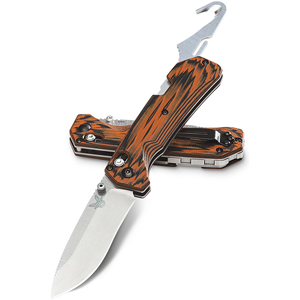 Also known as a sheath knife, a fixed blade knife is exactly what its name suggests. It has a fixed or unmovable blade, which, therefore, means that you cannot fold it down. They are strong and durable, mostly because the edge extends to the handle (tang). Plus, there are no moving parts, increasing the tool's control and strength.
Also known as a sheath knife, a fixed blade knife is exactly what its name suggests. It has a fixed or unmovable blade, which, therefore, means that you cannot fold it down. They are strong and durable, mostly because the edge extends to the handle (tang). Plus, there are no moving parts, increasing the tool's control and strength.
Fixed blades are the most popular choice among knife collectors and enthusiasts. Hunters, hikers, and outdoors people use them as well.
Most knives are considered fixed blade, such as daggers and rescue knives. Because the edges are always out, they are deemed useful for self-defence and hunting.
Folding
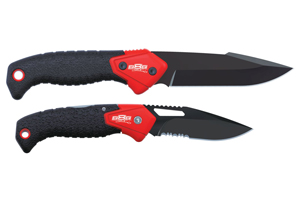 Pocket or folding knives are the opposite of fixed blades. Instead of a solid piece, folding knives have a pivot, which allows the blade to bend into the knife's handle.
Pocket or folding knives are the opposite of fixed blades. Instead of a solid piece, folding knives have a pivot, which allows the blade to bend into the knife's handle.
Another distinct feature of folding knives is that the blades are usually smaller than the fixed type. There are different styles of folding knives, especially those with a locking mechanism. This mechanism can be any of the following:
- Slip-Joint: Most folding knives have a slip-joint lock. Although it is classified as a locking mechanism, it is not a real lock since it does not hold the blade in place. It has a spring where the "lock" uses pressure, which would hold the edge up. Most light-duty folding knives have a slip-joint.
- Lockback: This type is called a spine lock, thanks to the metal running along the back of the handle. At the top of the knife's spine is the blade that looks like a hook. Whenever the edge is opened, the spine will be pushed out. This mechanism is a "true" lock. It does resemble a slip-joint, but the difference is the latch is on the lock rather than having a backspring.
- Linerlock: Out of all the locking mechanisms, a linerlock is probably the most common these days. They are usually found on tactical folding knives. With a linerlock, it is easy to disengage the lock using just one hand. A distinct feature is a bent liner, which lets the blade open without swinging back.
- Framelock: This type works just like the linerlock, except that it has a frame instead of a liner. This frame serves as the knife's spring, giving it more stability than the other type.
- Brand-Specific Locks: Finally, some brands have a locking mechanism licenced specially for them. You will recognise them because they are typically marked with the TM symbol.
Most folding knives come with either a thumb-screw or a knob, which you use to open the knife and access the blade using one hand.
Aside from fixed and folding knives, this tool can also be classified based on its role. Most knives can be used for different purposes, particularly the working blades, which are for everyday use. Meanwhile, others are for special functions, such as fighting and food prepping.
When buying a new knife, it always helps when you know what its purpose will be. If you are an outdoors person, you may be more inclined to purchase an outdoor or even a hunting knife. For chefs and cooks, a kitchen knife will be more useful.
Below, you will find the types of knives based on their purpose, as well as some specific examples for each:
Hunting Knives
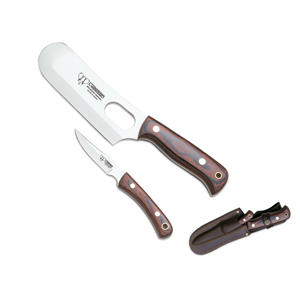 When in the wild, all hunting knives can be useful. Whether you need to cut rope or protect yourself, such a tool is indispensable. A few common types of hunting knives are:
When in the wild, all hunting knives can be useful. Whether you need to cut rope or protect yourself, such a tool is indispensable. A few common types of hunting knives are:
- Camp Knives are useful for splitting kindling and piercing twigs. They are multipurpose tools that you need if you plan to spend a few days in the wilderness. The primary purpose is to make camping much easier using its massive drop point.
- Bowie Knives have a double-edged tip, which can pierce through almost anything. This type of hunting knife can also be used for self-defence.
- Boning Knives, as the name suggests, are those that allow you to remove meat. They are specially made for deboning the carcass with the narrow blade. This knife does resemble a fillet knife, although there are a few differences.
- Caping Knives are for those who collect animal trophies. They allow you to slice through the animal without hurting the neck, making it easy for preservation. It looks like a scalpel and can have a long or short blade. The shorter blade is more recommended to get precise results in making quick and sharp neck cuts.
- Buck Knives are a large folding knife used for hunting. While many hunters prefer a fixed blade knife, buck knives are efficient because of their portability.
- Skinning Knives let you carefully slice through the hide without tearing it. A skinning knife is recognisable with its short yet sharp blade. The blade curves as it reaches the tip, which makes cutting much more straightforward.
- Daggers are a traditional hunting knife, which often serve as killing tools. The blade is double-edged, so it is quicker to pierce through the animal's heart.
With hunting knives, gutting, skinning, butchering, and deboning require less effort. When buying, you may want to inspect some features, including the gut hook, the style of the blade, and the handguard.
Utility Knives
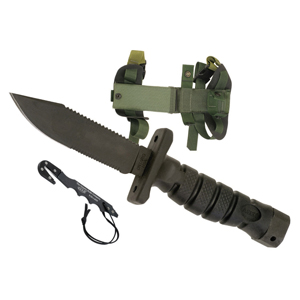 A utility knife is often called a general-purpose knife. It can be anything from a craft knife to a utility knife for cooking. Originally, this type only had a fixed blade, which workers would use for almost any cutting job.
A utility knife is often called a general-purpose knife. It can be anything from a craft knife to a utility knife for cooking. Originally, this type only had a fixed blade, which workers would use for almost any cutting job.
Until now, these utility knives are useful in scraping and cutting hides, slaughtering animals, and cleaning fish. Aside from the fixed blade utility knives, many folding utility knives exist today. They are usually small, but others are medium-sized.
The blades are retractable, so you can put them in your pocket and carry them anywhere they are allowed. These knives are also useful in the general workplace, as well as in construction.
Utility knives are also useful in combat, although some have longer blades, which may not be suitable for such a purpose. Small razor blades are excellent for slashing and other offensive moves.
Tactical or Combat Knives
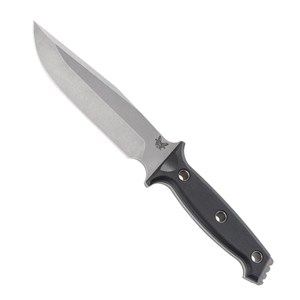 This type of knife is frequently for the military troops and other combatants. These tools are mostly known as fighting knives because they are used for extreme situations. In reality, however, tactical knives were first designed as a utility tool and not for defence or offence.
This type of knife is frequently for the military troops and other combatants. These tools are mostly known as fighting knives because they are used for extreme situations. In reality, however, tactical knives were first designed as a utility tool and not for defence or offence.
More often than not, tactical knives have fixed blades because of their durability. However, many organisations, such as armies and the military, prefer folding blades because they are easier to carry. They can be hidden in the pocket, boot, or other places.
While many knives can be used for combat, there are a few characteristics that are distinctly found in tactical knives:
- With a synthetic material for the handle
- Rough handle for better grip
- Non-reflective coating for the blades
- Designed for quick use
Over the years, the grip materials used have changed from wood to cast brass to aluminium. Today, most knives use modern synthetics, which have improved durability and reliability.
Kitchen Knives
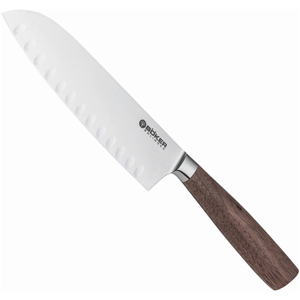 Working in the kitchen would not be complete and easy without knives. Kitchen knives are specially designed for chefs and cooks at home – and in professional settings as well.
Working in the kitchen would not be complete and easy without knives. Kitchen knives are specially designed for chefs and cooks at home – and in professional settings as well.
There are different types of kitchen knives. Others can accomplish what others can do while some are designed for certain applications. It is why you need to find the right knife for the job that you wish to accomplish.
The following are the basic options for kitchen knives:
- Chef Knives are also known as cook's or chef's knives. This type has a long, wide blade that has a straight edge. It is broadest at the heel and tapers to the tip. Its curved blade makes it easy to rock the tool back and forth on the chopping board. Therefore, chef knives are best for chopping and cutting onions, parsnips, potatoes, and other hard foods.
- Utility Knives are for chopping shallots and other smaller food. They function like chef knives, but they are mostly used when working with softer and lighter items. Utility knives offer more precision, which can be a problem with bigger and heavier tools.
- Paring Knives are conventional in the kitchen. They have a short and slim blade that has an even size. They are lighter when compared to many kitchen knives. Therefore, if you have delicate work to finish, you can reach for a paring knife. Use it to cut and slice fruits and vegetables. This knife is also utilised when working with harder foods like potatoes. Even though a paring knife will only do light tasks, such as peeling and trimming, it offers more manoeuvrability because of its lightness.
- Bread Knives have a serrated edge. The blade is even and long. You can think of a bread knife as a small saw, although it can only be used on soft items, such as – yes, you guessed it – bread. The grooved edge lets you cut through the gentle textures of bread and bagels without damaging them. Some cooks also use bread knives as a substitute for a cake leveller.
- Carving Knives are mostly used when working with meat. They are long and slim with a sharp point. You may know them as slicing knives, and you may recognise them as one of the longest knives in your kitchen. The thin width makes it easy to cut through food without feeling like you are dragging the knife. When you need to create cleaner and uniform cuts, this knife is the one you should go for. Carving knives are for slicing thin and neat pieces of pork, beef, poultry, lamb, or any meat. You can also use them for slicing big fruits and veggies, including melons, watermelons, and zucchinis.
- Butcher Knives, also known as cleavers, are easily identifiable because of their odd shape. While most knives are long and thin with a sharp tip, butcher knives are flat with a rectangular shape. There are different sizes, but they are usually one of the biggest knives that you can have in your kitchen. When you need to chop raw meat, a cleaver is precisely what you have to use. This type of kitchen knife makes it easier to divide the meat into much smaller portions. Some cooks also use this knife for crushing garlic cloves.
- Boning Knives have a sharp edge that typically tapers upwards. This knife is often short and rigid, although it is possible to find ones with flexible blades. A boning knife lets you cut meat bones for a perfect joint. It is also used for trimming cartilage and its fine tip lets you cut without ruining the flesh. Fillet or Filleting Knives are similar to a boning knife, but this one has a thinner blade. Often, a fillet knife's edge is flexible. Its job is to remove bones of fish while leaving the flesh intact. When you need to cut food horizontally, this knife is what you should use.
Other Types
There are more types of knives that you can find today. For instance, there are knives used for eating, such as steak or fish knife. They typically use metal or stainless steel as their primary material. They are much smaller than the knives used in the kitchen and often come with a serrated edge. The saw-like teeth will allow you to cut through tough food.
Aside from those mentioned, there are also some known as multitools. They are a collection of tools that include a knife and other essentials, such as openers, pliers, screwdrivers, and many more.
